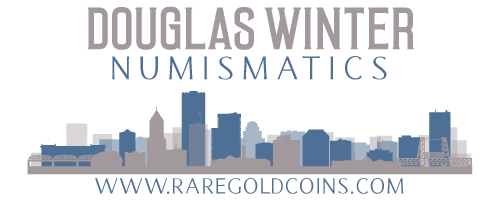Heritage's Charleston Collection Sale
/In my last blog I wrote about the Husky sale conducted by Stack’s and how a number of early quarter eagles gave a good representation as to the strength in that market. Another recent auction, this one conducted by Heritage, contained an impressive set of Classic Head quarter eagles. This grouping, I feel, serves as a good look at the current state of the high-end market for this short-lived but increasingly popular type. The collection that was sold by Heritage was called the Charleston Collection. It was not complete (it lacked an 1838-C) and it was a little inconsistent as to grade (the common 1836 was only an MS61 and the 1839-C was an AU58 that could have easily been improved while the collector was actively buying). Nevertheless, there were some impressive coins in this group.
In higher grades (i.e. MS63 and above) the 1835 is rare and very underrated. The Charleston coin was graded MS64 by PCGS. I wasn’t totally wild about the quality but it was in an old green label holder and it is one of just two graded MS64 by PCGS with none better. The last PCGS example to sell at public auction was Superior 5/06: 996 which brought $18,975. Given the fact that the Classic Head quarter eagle seems much stronger today than it was in 2006, I expected this coin to bring around $22,500. It sold for $19,550. Had it been a better quality for the grade, I think it would have brought more.
Perhaps the most interesting Classic Head quarter eagle in the sale was an 1837 in PCGS MS64. This was a very attractive coin for the grade and a condition rarity to boot with a PCGS population of three in this grade and only one better (NGC hasn’t graded a single example higher than MS63).
This exact coin had been sold twice by Heritage within the last few years. In the 2004 ANA auction it brought $18,975 and in the January 2007 sale it realized $26,450. Given these prior records and the interest that I felt certain this coin would generate, I was expecting a very strong price; perhaps as high as $35,000-40,000. The final price realized was an exceptional $48,875; a record price for a business strike of this date. Interestingly, the finest known 1837 (the amazing PCGS MS65 Bass II: 305 coin) had only brought $37,950 back in 1999.
Another interesting Classic Head quarter eagle in the sale was an 1839 graded MS61 by PCGS. This date is a major “sleeper” in high grades and it is actually rarer in Uncirculated than such heralded branch mint issues as the 1838-C and the 1839-D. The Charleston: 1806 coin was attractive for the grade with the eye appeal of an MS62/63 but with some old wipe lines on the surfaces. The last PCGS MS61 example to sell at auction had been the B&M 6/03: 1510 coin that went very cheaply at $6,038. Given the fact that the population of the 1839 in PCGS MS61 is just two (and only one coin, an MS62, is higher) I expected that this coin would bring at least $10,000 and probably a touch more.
The 1839 quarter eagle wound-up selling for $12,650 which is a record price for a business strike of this date but which, in the big picture, is pretty cheap for a Classic Head quarter eagle that is as rare as this. The finest known remains Bass II: 309 (graded MS62 by PCGS) that sold for a very reasonable $10,925 back in 1999.
Another Classic Head quarter eagle of interest in this sale was an 1839-D graded MS62 by PCGS. This is an exceptionally popular coin given its status as the first year of issue from the Dahlonega mint and the fact that it is a one-year type. I did not care for the Charleston: 1808 coin as I thought it had funky color and a dull, lackluster appearance. Nevertheless, I anticipated that this coin would see some strong bidding. The final price realized was $34,500.
In January 2008, Heritage had offered another 1839-D quarter in MS62; this one graded by NGC. I didn’t care much for this coin either but it brought $34,500. Clearly, this is now the standard for this coin in this grade as the Charleston coin brought the exact same amount.
Lot 1809 in the Heritage sale was an 1839-O graded MS64 by NGC. This coin is tied for the highest graded with four others at NGC and four at PCGS. This was an attractive coin with good luster and color and it had been sold by Heritage as Lot 406 in their April 2006 auction for $34,500.
Given the new strength in the market for high quality New Orleans gold (as well as the interest in choice Classic Head issues) I expected that this coin would sell for at least $35,000-40,000. It brought $40,250 which is a record auction price for this date.
So what did I learn from this sale in regards to the Classic Head quarter eagle market? As I expected, the high end of the market is very strong. I thought the price realized by the 1837 in PCGS MS64 was pretty remarkable and I thought the mintmarked coins described above were strong to very strong. My guess is that we will continue to see strong prices in this series for a while although I wouldn’t be surprised if we start to see some softening for the more common dates in higher grades as the levels for these have really shot up.













